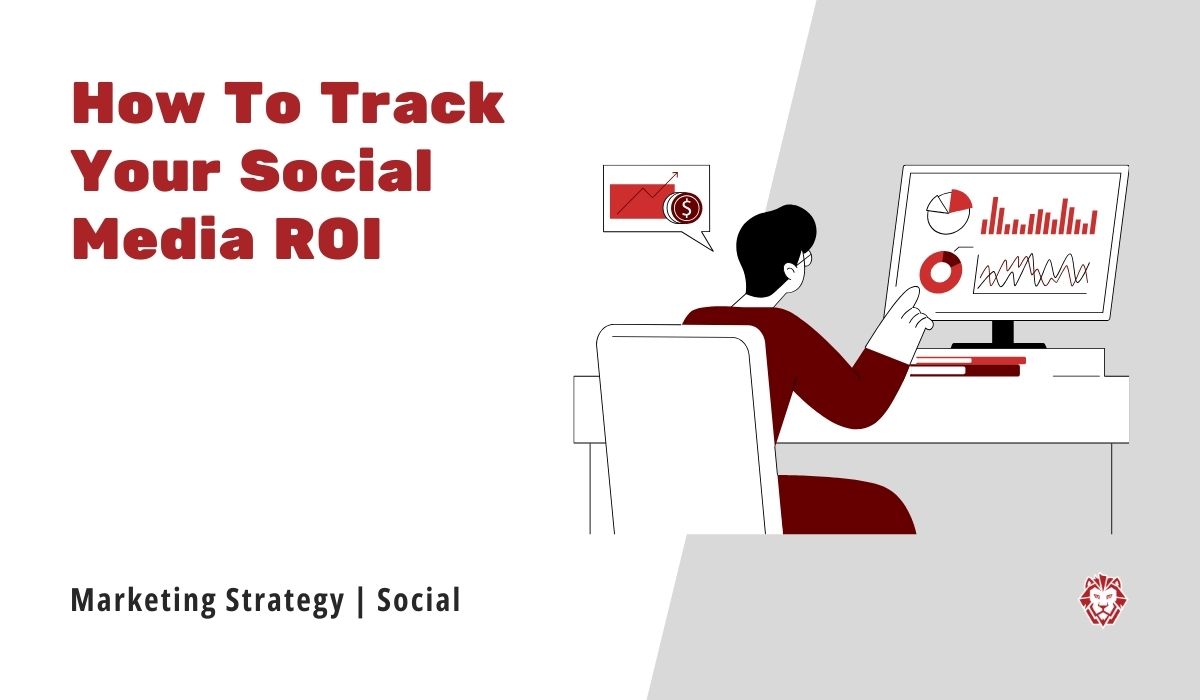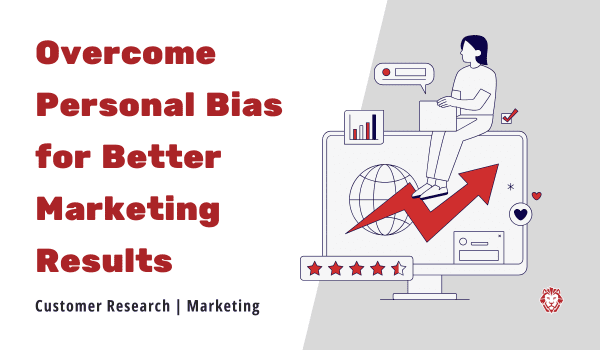
How To Track Your Social Media ROI
How to Track Your Social Media ROI
Using social media platforms for marketing has become an essential strategy for businesses of all sizes. However, it’s crucial to measure the return on investment (ROI) from your social media efforts to ensure that you are getting the desired outcomes. In this article, we will explore the importance of tracking social media ROI and provide you with valuable tips on how to do it effectively.
Understanding Social Media ROI
Before diving into the process of tracking social media ROI, it’s essential to understand what it actually means. Social Media ROI refers to the measurement of the return on investment from various social media activities. It helps you determine the value and impact of your social media marketing efforts.
Social media has become an integral part of our daily lives, with billions of people using platforms like Facebook, Instagram, Twitter, and LinkedIn. As businesses recognize the potential of social media as a marketing tool, it becomes crucial to assess the effectiveness of their social media campaigns.
Tracking social media ROI allows businesses to evaluate the success of their social media strategies and make data-driven decisions. By measuring the return on investment, companies can determine whether their social media efforts are generating tangible results or if adjustments need to be made.
Definition of Social Media ROI
Social Media ROI is a quantitative metric that calculates the profitability of social media activities based on the investment made. It involves tracking and analyzing the outcomes of your social media campaigns in relation to the resources allocated to them.
When calculating social media ROI, it is important to consider both the monetary and non-monetary benefits. Monetary benefits include direct revenue generated from social media campaigns, while non-monetary benefits include increased brand awareness, customer engagement, and improved customer loyalty.
By understanding the definition of social media ROI, businesses can establish clear objectives and metrics to measure their social media success. This allows for a more comprehensive evaluation of the impact of social media efforts on the overall business performance.
Importance of Tracking Social Media ROI
Tracking social media ROI is crucial for several reasons. Firstly, it allows you to evaluate the effectiveness of your social media efforts in achieving your business objectives. By monitoring ROI, you can identify which social media strategies are generating the desired outcomes and which ones need adjustments.
For example, if your goal is to increase website traffic, tracking social media ROI can help you identify which platforms or campaigns are driving the most traffic. This information enables you to optimize your efforts by focusing on the channels that yield the best results.
Moreover, tracking social media ROI enables you to allocate your resources effectively. It helps you identify high-performing social media channels and campaigns, allowing you to invest more in the areas that are delivering the best results. By reallocating resources from underperforming channels to those that generate a higher ROI, businesses can maximize their social media impact.
Lastly, tracking social media ROI provides you with actionable insights to improve your future social media campaigns. By analyzing the data, you can identify trends, patterns, and opportunities to optimize your strategies and maximize your ROI.
For instance, if you notice that a particular type of content consistently generates a higher ROI, you can tailor your future campaigns to focus on that content format. This data-driven approach allows businesses to continuously refine their social media strategies and improve their overall performance.
Tracking social media ROI is essential for businesses looking to make the most of their social media marketing efforts. By understanding the definition of social media ROI and its importance, companies can measure their success, allocate resources effectively, and continuously improve their strategies to achieve maximum impact.
Setting Up Your Social Media Goals
Before you start tracking your social media ROI, it’s essential to establish clear goals for your social media marketing efforts. Your goals should align with your overall business objectives and be specific, measurable, attainable, relevant, and time-bound (SMART).
Setting up your social media goals is a crucial step in ensuring the success of your marketing strategy. By defining what you want to achieve through your social media efforts, you can create a roadmap for success and measure your progress along the way.
Identifying Your Business Objectives
Start by identifying your business objectives and how social media can help you achieve them. Your objectives might include increasing brand awareness, generating leads, driving website traffic, improving customer engagement, or boosting sales.
Understanding your business objectives is essential because it allows you to align your social media goals with what you want to accomplish as a company. For example, if your main objective is to increase brand awareness, you can set specific social media goals that focus on reaching a wider audience and increasing your online visibility.
By clearly defining your business objectives, you can align your social media goals accordingly and collect the right data to measure your ROI accurately. This alignment ensures that your social media efforts are not only effective but also contribute to the overall success of your business.
Aligning Social Media Goals with Business Objectives
Once you have established your business objectives, you need to align your social media goals with them. This alignment ensures that your social media efforts are focused and directly contribute to the achievement of your overall objectives.
For example, if your objective is to increase brand awareness, your social media goal might be to grow your follower count or increase post reach. By setting specific goals that directly relate to your business objectives, you can measure the success of your social media campaigns and determine their impact on your overall brand awareness.
It’s important to ensure that your social media goals are specific and measurable, making it easier to track and evaluate your ROI accurately. By setting specific metrics to measure your progress, such as the number of followers gained or the increase in website traffic from social media, you can gauge the effectiveness of your efforts and make data-driven decisions to optimize your strategy.
Remember, aligning your social media goals with your business objectives is a continuous process. As your business evolves and your objectives change, it’s essential to reassess and adjust your social media goals accordingly. By regularly evaluating and refining your goals, you can ensure that your social media efforts remain aligned with your business objectives and continue to drive meaningful results.
Selecting the Right Social Media Metrics
Choosing the right social media metrics is crucial for tracking your ROI effectively. By focusing on the metrics that align with your goals, you can gain meaningful insights and measure your success accurately.
Overview of Social Media Metrics
Social media metrics can be categorized into four primary areas: reach, engagement, conversion, and customer satisfaction. Reach metrics measure the size of your audience, engagement metrics evaluate the level of interaction with your content, conversion metrics track the actions taken by your audience, and customer satisfaction metrics gauge the sentiment and feedback from your audience.
When it comes to reach metrics, it’s important to look beyond just the number of followers or fans. While these numbers can give you an idea of your potential audience size, they don’t necessarily reflect the actual reach of your content. Reach metrics can include metrics such as impressions, reach per post, or reach per campaign. These metrics can help you understand how many people are actually seeing your content and how far your message is spreading.
Engagement metrics are essential for evaluating the level of interaction with your content. Likes, comments, shares, and retweets are all examples of engagement metrics. These metrics can help you understand how well your content resonates with your audience and how actively they are participating in your social media campaigns.
Conversion metrics are particularly important if your goal is to drive specific actions from your audience. These metrics can include click-through rates, conversion rates, or cost per lead. By tracking these metrics, you can assess the effectiveness of your social media campaigns in driving the desired actions, such as website visits, form submissions, or purchases.
Customer satisfaction metrics are often overlooked but can provide valuable insights into how your audience perceives your brand and content. These metrics can include sentiment analysis, feedback surveys, or customer reviews. By understanding the sentiment and feedback from your audience, you can make informed decisions to improve your social media strategies and enhance customer satisfaction.
Choosing Metrics That Align with Your Goals
Based on your social media goals and objectives, select the metrics that provide valuable insights into your progress. For example, if your goal is to generate leads, you may focus on metrics such as click-through rates, conversion rates, or cost per lead.
However, it’s important to consider the broader context of your goals and choose a combination of metrics that collectively reflect the success of your social media campaigns. For instance, if your goal is to increase brand awareness, you may also want to track metrics such as reach, impressions, and engagement rates. These metrics can help you understand how effectively your content is reaching and resonating with your target audience.
Additionally, it’s crucial to regularly review and analyze your chosen metrics to make data-driven decisions. By monitoring your metrics over time, you can identify trends, spot areas for improvement, and optimize your social media strategies accordingly.
Selecting the right social media metrics is a critical step in measuring the success of your campaigns and tracking your ROI. By understanding the different categories of metrics and choosing the ones that align with your goals, you can gain valuable insights into your social media performance and make informed decisions to drive better results.
Utilizing Social Media Analytics Tools
Tracking social media ROI requires the use of analytics tools that provide you with the necessary data and insights. These tools enable you to measure your social media performance, track key metrics, and make data-driven decisions.
Introduction to Social Media Analytics Tools
There are several social media analytics tools available in the market, each offering unique features and capabilities. Some popular options include Google Analytics, Hootsuite Analytics, Sprout Social, and Buffer Analyze. These tools provide you with in-depth analytics, such as audience demographics, engagement rates, and content performance.
Google Analytics is a widely used tool that offers comprehensive insights into your website and social media performance. It allows you to track the number of visitors, page views, and conversions driven by your social media efforts. With its robust reporting capabilities, you can analyze the effectiveness of your social media campaigns and identify areas for improvement.
Hootsuite Analytics, on the other hand, is a social media management platform that provides detailed analytics for multiple social media platforms in one place. It allows you to monitor your social media accounts, track engagement metrics, and measure the impact of your social media activities. With its customizable dashboards and real-time data, you can easily visualize your social media performance and make informed decisions.
Sprout Social is another popular tool that offers a comprehensive suite of social media analytics features. It provides detailed reports on audience demographics, engagement rates, and content performance across various social media platforms. With its intuitive interface and advanced analytics, you can gain valuable insights into your social media ROI and optimize your strategies accordingly.
Buffer Analyze is a social media analytics tool that focuses on providing actionable insights to improve your social media performance. It offers detailed reports on key metrics such as reach, engagement, and conversions. With its data-driven recommendations, you can identify the best-performing content and optimize your social media strategy for maximum ROI.
How to Use Analytics Tools for Tracking ROI
Once you have selected the appropriate social media analytics tool, it’s important to set up tracking parameters and goals within the tool. This allows you to collect the necessary data for measuring your social media ROI effectively.
Start by defining your social media goals and objectives. Are you looking to increase brand awareness, drive website traffic, or generate leads? Once you have a clear understanding of your goals, you can set up tracking parameters within the analytics tool to measure the success of your social media campaigns.
For example, if your goal is to drive website traffic, you can set up UTM parameters for your social media links. This will enable you to track the number of visitors and conversions generated from each social media platform. By analyzing this data, you can determine which platforms are driving the most traffic and optimize your efforts accordingly.
In addition to tracking parameters, it’s important to regularly monitor your analytics, analyze the data, and make adjustments to your social media strategies based on the insights gained. This iterative process ensures that you continuously improve your ROI and achieve your social media goals.
For instance, if you notice that a particular type of content is performing exceptionally well in terms of engagement and conversions, you can allocate more resources towards creating similar content. On the other hand, if a certain social media platform is not delivering the desired results, you can reevaluate your strategy for that platform or consider reallocating your resources to more effective channels.
Furthermore, social media analytics tools can also provide valuable insights into your audience demographics and preferences. By understanding your target audience better, you can tailor your content and messaging to resonate with them, leading to higher engagement and conversions.
Utilizing social media analytics tools is essential for tracking ROI and optimizing your social media strategies. These tools provide you with detailed insights into your social media performance, allowing you to make data-driven decisions and continuously improve your ROI. Whether you choose Google Analytics, Hootsuite Analytics, Sprout Social, or Buffer Analyze, each tool offers unique features and capabilities to help you achieve your social media goals.
Calculating Your Social Media ROI
Calculating social media ROI involves the analysis of both financial and non-financial data. While financial data includes revenue generated or costs saved from social media efforts, non-financial data comprises metrics like engagement, reach, and brand sentiment.
Social media has become an integral part of marketing strategies for businesses of all sizes. It provides a platform for companies to connect with their target audience, build brand awareness, and drive customer engagement. However, measuring the return on investment (ROI) of social media activities can be a complex task.
Step-by-Step Guide to Calculating ROI
- Determine your social media investment by considering the costs associated with content creation, advertising, and employee salaries dedicated to social media activities.
Creating engaging and compelling content is crucial for social media success. This includes designing eye-catching graphics, writing captivating captions, and producing high-quality videos. Additionally, businesses often allocate a portion of their marketing budget to social media advertising to reach a wider audience. Lastly, companies may have employees dedicated to managing social media accounts and interacting with followers.
- Identify your social media returns by analyzing the financial gains or customer actions directly attributed to your social media campaigns, such as sales revenue or leads generated.
Measuring the impact of social media on financial gains can be challenging. However, by implementing tracking mechanisms such as unique URLs or promo codes, businesses can attribute sales directly to their social media efforts. Additionally, tracking the number of leads generated through social media campaigns can provide valuable insights into the effectiveness of your strategy.
- Divide the returns by the investment and multiply by 100 to calculate your ROI percentage.
Calculating the ROI percentage allows you to determine the effectiveness of your social media activities. A higher ROI indicates that your social media efforts are generating more revenue or value than the investment made. Conversely, a lower ROI suggests that adjustments or optimization strategies are needed to improve the return on investment.
Interpreting Your ROI Results
Interpreting your ROI results requires a comprehensive analysis of the data. Positive ROI indicates that your social media efforts are generating more revenue or value than the investment made, while negative ROI suggests that adjustments or optimization strategies are needed.
It’s important to remember that ROI is an ongoing metric that should be monitored regularly to ensure the effectiveness of your social media campaigns. By tracking the ROI of your social media activities, you can make data-driven decisions and optimize your strategy to achieve better results.
Furthermore, analyzing non-financial data such as engagement, reach, and brand sentiment can provide valuable insights into the effectiveness of your social media campaigns. Monitoring metrics like the number of likes, comments, shares, and followers gained can help you gauge the level of audience engagement. Additionally, tracking the reach of your social media posts can give you an idea of how many people are exposed to your content.
Brand sentiment, on the other hand, refers to the overall perception and attitude of your audience towards your brand. Monitoring sentiment through social listening tools or analyzing comments and mentions can help you understand how your brand is perceived and make necessary adjustments to your social media strategy.
Calculating social media ROI involves analyzing both financial and non-financial data. By following a step-by-step guide and interpreting the results, businesses can gain valuable insights into the effectiveness of their social media efforts. Regular monitoring and analysis of ROI metrics, as well as non-financial data, can help businesses optimize their social media strategy and achieve better results.
Tips for Improving Your Social Media ROI
Maximizing your social media ROI requires continuous improvement and optimization. Here are some tips to help you enhance your results:
Strategies for Boosting Social Media Engagement
- Create compelling and shareable content.
- Engage with your audience through comments, messages, and conversations.
- Run contests or giveaways to encourage participation.
Optimizing Your Social Media Content for Better ROI
- Use relevant keywords and hashtags to improve discoverability.
- Post at optimal times when your audience is most active.
- A/B test different content formats to identify what resonates with your audience.
Common Mistakes in Tracking Social Media ROI
While tracking social media ROI, it’s important to be aware of common mistakes that can hinder accurate measurement and analysis. By avoiding these pitfalls, you can ensure that your ROI tracking is reliable and effective.
Pitfalls to Avoid in Social Media ROI Tracking
- Not setting clear goals and objectives for your social media campaigns.
- Overlooking the importance of selecting the right metrics for tracking ROI.
- Ignoring the power of social media analytics tools in measuring and analyzing data.
How to Overcome ROI Tracking Challenges
- Establish clear goals and objectives for your social media campaigns from the start.
- Regularly evaluate and refine your social media metrics to ensure they align with your goals.
- Invest in reliable social media analytics tools that provide accurate and comprehensive data.
By following these best practices and avoiding common mistakes, you can effectively track your social media ROI and optimize your strategies for maximum success. Remember, tracking ROI is an ongoing process that requires continuous monitoring and adjustment to ensure the long-term success of your social media marketing efforts.
Need help tracking your social media ROI? Connect with our team today!



